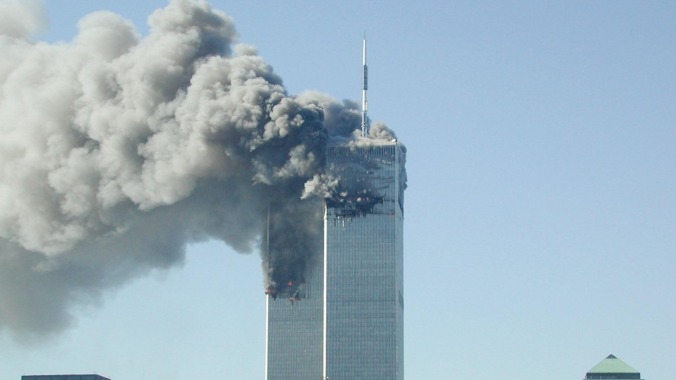We’re rapidly approaching the 20th anniversary of September 11, 2001, the day that the [TK TK attempt to describe widespread cultural impact of 9/11 in a single sentence here TK TK]. In a coincidental concurrence with that anniversary, though, a judge has just given a wide-ranging copyright ruling on the use of footage of 9/11 in a wide number of documentaries and docudramas, ranging from right-wing conspiracy films to Oliver Stone’s World Trade Center. We don’t usually think of the kinds of iconic images that 9/11 produced in droves in terms of ownership, but photojournalist Anthony Fioranelli does as part of his livelihood, and he’s now got the ruling of a judge to back him up on at least some of his copyright complaints.
It all comes back to this: Back in 2001, Fioranelli was one of only four photographers allowed into the Ground Zero area in the wake of the terrorist attacks; he later licensed much of the footage he took that day to CBS for use in news coverage and potential documentaries. (All of this is pretty straightforward, although CBS and Fioranelli got into it later about whether the network had violated that agreement at certain points.) A few years later, though, CBS cut together its footage from those confusing days into a pair of newsreels that were then licensed (and sub-licensed) out to a whole bunch of other people, including the BBC. Those newsreels, as it happened, contained unauthorized usage of Fioranelli’s work—including shots of firefighters picking through rubble in NYC—and more than a dozen projects ended up using that copyrighted material for what they thought were properly licensed works.
Which brings us to the court case, which has stretched across more than 2 years of judgment, as Judge Vernon Broderick was forced to sift through Seven Signs Of The Apocalypse, Conspiracy Theory: Death Ray, Celsius 41.11, and more in an effort to determine which of these instances might pass the often nebulous bar surrounding “fair use.” Rather than hand down a blanket statement, Broderick went extremely detailed with his decision, noting, for instance, that Stone’s decision to use Fioranelli’s footage in World Trade Center, and his choice to only show said footage on in-film televisions, qualified as transformative, getting the film, and Paramount, off the hook. But, say, Crime Scene 9/11 was found to have used the footage in the way that the artist originally intended it himself, i.e., to provide ‘photographic memory of the events of 9/11 for posterity,” which brings it much closer to copyright infringement, and the likely need for a trial.
If you’re so inclined, you can read the full decision for yourself over at The Hollywood Reporter. (Warning: It’s 92 pages long, and pretty detailed, so you might be there for a minute.) It’s a fascinating look at the way copyright law and our attempts to understand our own history intertwine; it’s also a reminder that we used to let Jesse Ventura do a TV show where he investigated whether someone used a Death Ray to bring the towers down on 9/11, so there’s that, too.









![HBO teases new Euphoria, Larry David, and much more in 2026 sizzle reel [Updated]](https://img.pastemagazine.com/wp-content/avuploads/2025/12/12100344/MixCollage-12-Dec-2025-09-56-AM-9137.jpg)































